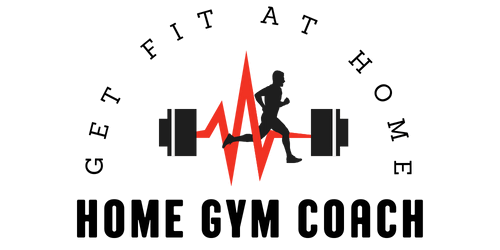Are you looking to spice up your home workouts and achieve maximum results in minimum time? Look no further than HIIT, or High-Intensity Interval Training! HIIT is a fantastic way to boost your metabolism, burn fat, and increase cardiovascular fitness. The best part? You can easily incorporate HIIT into your home workouts, no fancy equipment required. In this article, we will explore some simple yet effective ways to add HIIT exercises to your routine, helping you take your fitness journey to new heights. So, grab a towel and get ready to sweat it out in the comfort of your own home!

Benefits of HIIT
High-Intensity Interval Training, or HIIT, has gained popularity in recent years due to its numerous benefits. Incorporating HIIT into your home workouts can provide you with a range of advantages that can improve your overall fitness and well-being.
Improved cardiovascular fitness
One of the key benefits of HIIT is the improvement it brings to your cardiovascular fitness. By engaging in high-intensity bursts of exercise followed by short recovery periods, you challenge your heart and lungs to work harder. Over time, this can lead to increased stamina, endurance, and a stronger cardiovascular system. Improved cardiovascular fitness not only enhances your ability to perform daily activities but also reduces the risk of heart disease and other cardiovascular conditions.
Increased calorie burn
If you’re looking to shed some extra pounds or maintain a healthy weight, HIIT can be a game-changer. The intense nature of HIIT workouts causes your body to continue burning calories even after you’ve finished exercising. This is known as the afterburn effect or excess post-exercise oxygen consumption (EPOC). HIIT has been shown to increase your metabolic rate, resulting in a higher calorie burn throughout the day compared to traditional steady-state cardio exercises.
Time-efficient workouts
One of the biggest challenges people face when it comes to exercise is finding the time to do it. HIIT solves this problem by offering time-efficient workouts that can be completed in as little as 15-20 minutes. The high-intensity intervals combined with the short recovery periods result in a highly effective workout in a fraction of the time. This makes HIIT perfect for those with busy schedules or anyone looking to maximize their workout in a limited timeframe.
Boost in metabolism
Another significant advantage of HIIT is its ability to boost your metabolism. Regular HIIT workouts have been shown to increase your metabolic rate for hours after exercise. This means that even when you’re resting, your body continues to burn calories at a higher rate. A boosted metabolism not only aids in weight management but also improves overall energy levels and helps your body function optimally.
Setting Up Your HIIT Home Workout
Now that you understand the benefits of HIIT, let’s delve into how you can set up your own HIIT home workout routine to maximize your results.
Define your goals
Before starting any workout program, it’s essential to define your goals. Are you looking to improve your cardiovascular health, lose weight, build strength, or simply maintain your fitness levels? Once you’ve identified your objectives, you can tailor your HIIT workouts to align with those goals.
Select appropriate exercises
The next step is to choose exercises that suit your fitness level and target the muscle groups you want to work on. HIIT workouts can be adapted to include a variety of exercises such as squats, lunges, push-ups, burpees, and more. It’s important to select exercises that challenge you but are still within your capabilities.
Create a workout schedule
To ensure consistency and progress, it’s crucial to create a workout schedule. Determine how many days a week you can commit to HIIT workouts and allocate specific time slots for each session. Having a schedule in place helps you stay accountable and ensures you prioritize your physical health.
Ensure proper warm-up and cool-down
Never underestimate the importance of a proper warm-up and cool-down. Before starting your HIIT workout, spend a few minutes engaging in dynamic stretches and mobility exercises to prepare your body for the intense activity ahead. Similarly, after completing your workout, take the time to cool down with static stretches and deep breathing to aid in muscle recovery and reduce the risk of injuries.
Modify exercises for your fitness level
It’s essential to modify exercises to suit your current fitness level. If you’re just starting with HIIT, you may need to adjust the intensity, duration, or number of repetitions to avoid overexertion. As you progress and become more comfortable with the workouts, you can gradually increase the difficulty level to continue challenging your body and achieving new fitness milestones.

Creating HIIT Circuit Workouts
HIIT circuit workouts offer an effective way to target multiple muscle groups and keep your workouts interesting. Here’s how you can create your own HIIT circuit workouts at home.
Choose exercises for different muscle groups
To ensure a well-rounded workout, include exercises that target different muscle groups. This not only helps with overall strength and toning but also allows for proper muscle recovery between sets. For example, you can include squats or lunges to work the lower body, push-ups or shoulder presses for the upper body, and planks or Russian twists for the core.
Determine work and rest intervals
HIIT circuit workouts typically involve alternating between periods of high-intensity exercise and short recovery periods. The length of these intervals depends on your fitness level and goals. Beginners may start with shorter work intervals (e.g., 20 seconds) followed by slightly longer rest intervals (e.g., 40 seconds), while more advanced individuals may opt for longer work intervals and shorter rest periods.
Design circuit variations for variety
To keep your workouts engaging and prevent boredom, it’s important to design circuit variations. This can involve changing the order of exercises, modifying the number of repetitions or sets, or incorporating different equipment or movements. Adding variety to your circuits not only keeps your muscles guessing but also allows you to continuously challenge yourself and prevent plateaus.
Progressive overload for continuous improvement
Progressive overload is a key principle in any successful fitness program. It involves gradually increasing the intensity, duration, or complexity of your workouts over time to promote continuous improvement. With HIIT, you can apply progressive overload by gradually increasing the work intervals, reducing the rest periods, or adding more challenging exercises to your circuit. This ensures that your body is constantly adapting and pushing its limits.
Equipment and Space Requirements
One of the great things about HIIT is that it can be done with minimal equipment and in small spaces. Here are some options for equipment and space requirements for your HIIT home workouts.
Minimal equipment options
If you prefer to keep your equipment collection to a minimum, fear not! HIIT workouts can be done using just your body weight. Exercises such as squats, push-ups, burpees, and mountain climbers can effectively target multiple muscle groups without the need for any additional equipment. This makes HIIT an accessible option for those on a tight budget or lacking in space.
Bodyweight exercises for tight spaces
If you have limited space at home, you can still enjoy the benefits of HIIT using bodyweight exercises. As mentioned earlier, movements like squats, lunges, and planks can be done in a small area. You can also incorporate cardio exercises like high knees, jumping jacks, or running in place to get your heart rate up without needing much room.
Expanding your equipment collection
While HIIT can be done without any equipment, some individuals may prefer to add variety to their workouts by incorporating additional equipment. Items such as resistance bands, dumbbells, kettlebells, or medicine balls can be used to increase the intensity of certain exercises or target specific muscle groups. If you have the space and budget, investing in a few versatile pieces of equipment can add a new dimension to your HIIT workouts.

Sample HIIT Home Workout Routine
To give you a starting point, here’s a sample HIIT home workout routine that targets different muscle groups and incorporates a mix of cardio and strength exercises.
Warm-up: Jumping jacks, high knees, arm circles
Before diving into the main workout, warm up your body with a few dynamic exercises. Perform jumping jacks, high knees, and arm circles for about 5-10 minutes to get your heart rate up, loosen your muscles, and prepare your body for the upcoming workout.
Circuit 1: Squats, push-ups, mountain climbers
Perform each exercise for 40 seconds, followed by a 20-second rest. Repeat the circuit 3 times.
Squats: Stand with feet shoulder-width apart, lower your body into a squat position, keeping your back straight and knees aligned with your toes. Push through your heels to return to the starting position.
Push-ups: Start in a plank position, with your hands shoulder-width apart and core engaged. Lower your body until your chest touches the floor, then push back up to the starting position.
Mountain climbers: Begin in a plank position, bringing one knee towards your chest and then quickly alternating with the other knee. Maintain a strong core and a quick pace throughout the exercise.
Circuit 2: Lunges, tricep dips, Russian twists
Perform each exercise for 40 seconds, followed by a 20-second rest. Repeat the circuit 3 times.
Lunges: Stand with feet hip-width apart, step forward with one leg, and lower your body until both knees are at a 90-degree angle. Push through your front heel to return to the starting position, then repeat with the other leg.
Tricep dips: Find a sturdy chair or bench, with your hands gripping the edge and fingers facing forward. Lower your body by bending your elbows until your upper arms are parallel to the ground, then push back up to the starting position.
Russian twists: Sit on the floor with your knees bent and feet lifted off the ground. Lean back slightly, keeping your core engaged, and twist your torso from side to side, touching the floor on each side.
Circuit 3: Burpees, planks, bicycle crunches
Perform each exercise for 40 seconds, followed by a 20-second rest. Repeat the circuit 3 times.
Burpees: Start in a standing position, then lower your body into a squat position and place your hands on the floor. Kick your legs back to a plank position, perform a push-up, then jump your feet back towards your hands and explode into a jump, reaching towards the ceiling.
Planks: Begin in a forearm plank position, with your elbows directly beneath your shoulders and your body in a straight line from head to heels. Hold this position for the designated time, keeping your core engaged and avoiding any sagging or lifting of the hips.
Bicycle crunches: Lie on your back with your hands behind your head and your knees bent. Lift your shoulders off the ground, bringing your right elbow towards your left knee while simultaneously extending your right leg. Alternate sides in a cycling motion, engaging your core throughout the exercise.
Cooldown: Light stretching and deep breathing
After completing your circuit workouts, it’s essential to cool down and allow your body to recover. Spend a few minutes performing gentle static stretches for the major muscle groups you worked during the workout. This helps reduce muscle soreness, improve flexibility, and promote relaxation. Remember to take deep breaths during your cooldown to slow your heart rate and promote a sense of calm.
Keeping Motivated and Avoiding Burnout
To maintain a consistent and enjoyable HIIT home workout routine, it’s important to stay motivated and avoid burnout. Here are some tips to help you stay on track and keep your fitness journey a positive experience.
Find a workout buddy or join a virtual class
Working out with a partner or participating in virtual classes can make your HIIT sessions more fun and motivating. Having someone to challenge and support you can increase your accountability and help you push through tough workouts. Participating in virtual classes also gives you the opportunity to connect with other like-minded individuals and benefit from the collective energy of a group.
Set realistic goals and track your progress
Setting realistic goals is essential to maintaining motivation and avoiding frustration. Break your overall fitness goal into smaller, achievable milestones and celebrate each accomplishment along the way. Keep track of your progress by journaling your workouts, tracking your exercise duration or intensity, or taking measurements of your body. Seeing your progress in black and white can be a powerful motivator.
Mix in other forms of exercise
While HIIT is a highly effective workout method, it’s important to vary your exercise routine to prevent boredom and ensure overall fitness. Incorporate other forms of exercise such as yoga, Pilates, strength training, or outdoor activities to keep your workouts diverse. This not only challenges different muscle groups but also allows you to explore different movement patterns and stay mentally engaged.
Listen to your body and adjust intensity
Remember that your body knows best, so always listen to its cues. If you’re feeling excessively fatigued or experiencing pain, it’s crucial to scale back the intensity or take rest days to allow for proper recovery. Pushing yourself too hard without adequate rest can lead to burnout and increase the risk of injury. Pay attention to how your body feels and make adjustments accordingly.
Common Mistakes to Avoid
As with any workout program, there are common mistakes that individuals often make when incorporating HIIT into their routines. By being aware of these mistakes, you can ensure a safer and more effective workout experience.
Starting too intense too soon
One of the most common mistakes is starting with an intensity level that is too high for your current fitness level. HIIT is meant to challenge you, but it’s essential to gradually build up your endurance and strength. Beginning with too much intensity can lead to burnout, injury, or discouraged feelings if you’re unable to keep up. Start at a pace that allows you to complete the workouts with proper form, and gradually increase the intensity as you progress.
Ignoring proper form and technique
Maintaining proper form and technique is crucial during HIIT workouts to prevent injury and ensure optimal results. Rushing through exercises or sacrificing form for speed can lead to muscle imbalances, strains, or sprains. Take the time to learn and understand how each exercise should be performed. If necessary, consult a fitness professional or watch instructional videos to ensure you’re executing the movements correctly.
Skipping warm-up and cooldown
Skipping the warm-up and cooldown is a common mistake that can have negative consequences. A proper warm-up prepares your body for the upcoming workout by gradually increasing your heart rate, increasing blood flow to your muscles, and loosening up your joints. Skipping this crucial step can increase the risk of injuries. Likewise, neglecting the cooldown can leave your muscles tight and potentially increase soreness. Always allocate time to properly warm up and cool down to optimize your workouts.
Not allowing enough recovery time
HIIT workouts are intense and can put a significant strain on your muscles and joints. It’s crucial to allow sufficient recovery time between workouts to promote muscle repair and growth. Overtraining without proper rest can lead to a plateau in results, decreased motivation, and an increased risk of overuse injuries. Incorporate rest days into your workout schedule and listen to your body’s signals for when it’s time to take it easy.
Tips for Consistency and Long-Term Success
To ensure long-term success with your HIIT home workouts, it’s important to establish consistency and create a sustainable fitness routine. Here are some tips to help you stay committed and achieve your fitness goals.
Schedule your workouts in advance
Treat your HIIT workouts like any other important appointment, and schedule them in advance. Whether it’s first thing in the morning, during your lunch break, or in the evening, block off dedicated time for your workouts each week. By having a set schedule, you’re less likely to make excuses and more likely to follow through with your workouts.
Make it enjoyable with music or podcasts
Music can be a powerful motivator during workouts, so create a playlist of your favorite high-energy songs to enhance your HIIT sessions. Alternatively, if you enjoy podcasts or audiobooks, use your workout time as an opportunity to listen to something that interests you. Making your workouts enjoyable helps you look forward to each session and makes the time fly by.
Reward yourself for reaching milestones
As you progress on your HIIT journey, take the time to reward yourself for reaching milestones. Celebrate completing a challenging workout, achieving a new personal best, or sticking to your workout schedule for a certain period of time. Rewards can be as simple as treating yourself to a relaxing bath, buying a new workout outfit, or indulging in a favorite healthy treat. These rewards act as positive reinforcement, motivating you to keep pushing forward.
Prioritize rest and recovery
While it’s important to stay consistent with your workouts, it’s equally important to prioritize rest and recovery. Allow yourself regular rest days to give your body time to repair and rebuild. During rest days, focus on activities that promote relaxation and recovery, such as gentle stretching, foam rolling, or practicing mindfulness techniques. Avoid feeling guilty for taking rest days and remember that it’s an essential part of the overall fitness journey.
Consulting a Professional
If you’re new to exercise or have any health concerns, it’s always a good idea to consult a medical professional before starting a new workout program. They can provide guidance on any specific considerations or modifications you may need to make based on your individual circumstances.
Additionally, working with a personal trainer or fitness coach can be extremely beneficial, especially if you’re unfamiliar with HIIT or require extra motivation and guidance. A professional can design personalized workouts, demonstrate proper form, and help you progress safely. They can also provide accountability and support, increasing your chances of success.
Incorporating HIIT into your home workouts can be a powerful way to improve your cardiovascular fitness, torch calories, and achieve your fitness goals. By following the tips and guidelines outlined in this article, you’ll be well on your way to a challenging and rewarding HIIT workout routine.


